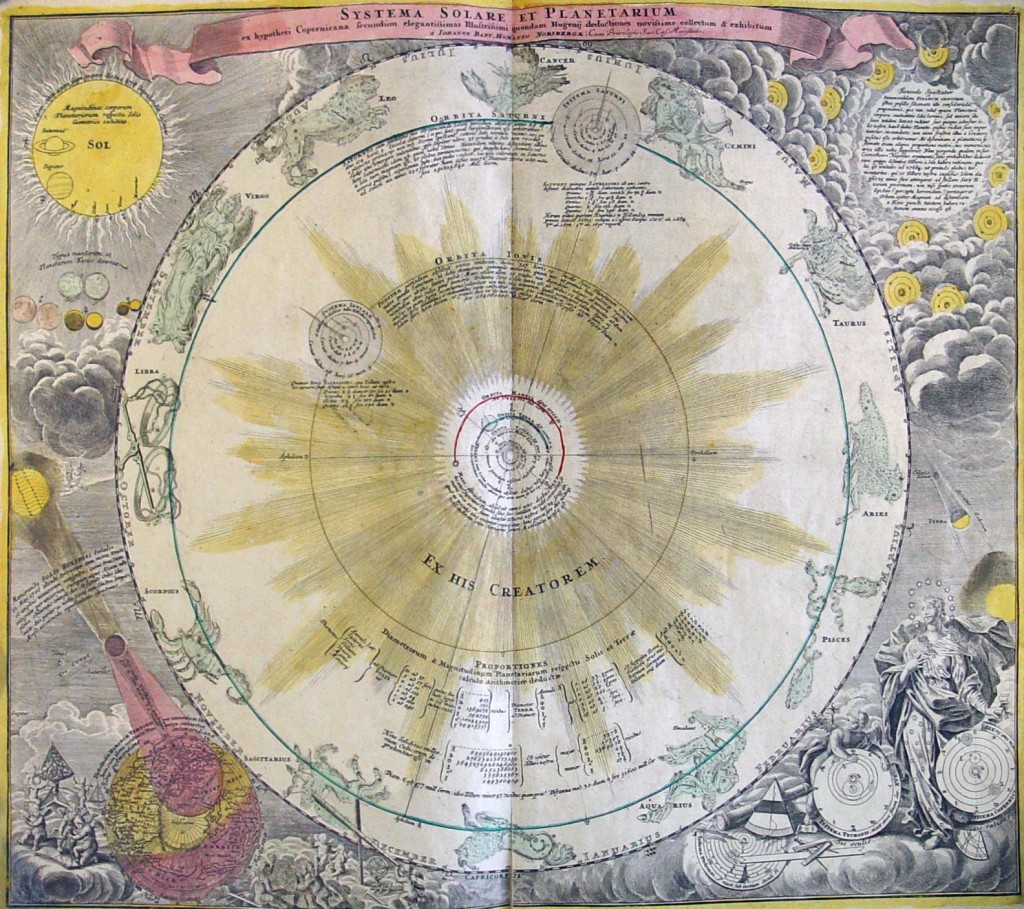From the Collection: Dopplemayer’s “Atlas novus coelesti”
The night sky has always been a source of inspiration for art that borders on science (or maybe the other way around). Examples are as ancient as the Dunhuang Star Chart, from the Tang Dynsaty in China (618–907), and the Farnese Atlas from the 2nd century BCE. During the 17th and 18th centuries, scientists and illustrators in Europe brought forth their own contributions by creating gorgeous illustrated atlases of the night sky.
One of the most famous examples comes from Johann Gabriel Doppelmayr (1677-1750), a German mathematician and cartographer. Doppelmayer’s Atlas novus coelesti, published in 1742, is a fantastic example of the genre. In it, Doppelmayer goes beyond depicting the star field and the constellations, he compiles the best astronomical knowledge available in his time into one book. It’s an awkward size for digitizing, but here’s a good photograph of the central plate.

Historian Nick Kanas notes, “In a sense, this beautiful plate depicts the state of astronomical knowledge in the early 1700s.” It’s a remarkable work of art in its own right, but it is also packed with information. At the top left is a scale drawing of the planets relative to the sun. Beneath that is a diagram of a solar eclipse that occurred on May 12, 1706, depicting that shadow of the moon being cast on a tiny map of the earth’s surface. The bottom right shows the three major theories of the solar system: the Ptolemaic geocentric model on the left (partially obscured by scientific instruments in a not-so-subtle jab), the hybrid system invented by Tycho Brache (now mostly forgotten) in the middle and the Copernican heliocentric model on the right. The Copernican model is labeled “sic ratione” or “according to reason,” making Dopplemayer’s verdict on the theories clear.
Of course, Copernicus’ model takes pride of place in the center of the work. Depicted are the known planets and their moons, and the zodiac taking up the outer edge. Included is text with dimensions and distances for the planets. The largest text on the page, after the title, reads “Ex His Creatorem,” or “From This [We See] the Creator”.
This is just one of the plates in the text, and Atlas novus coelesti is a crown jewel in our rare book collection. We are indebted to Union College Special Collections for housing this and all our other rare books, which are simply too old and fragile to sit next to the old GE refrigerators in miSci’s collection storage.
